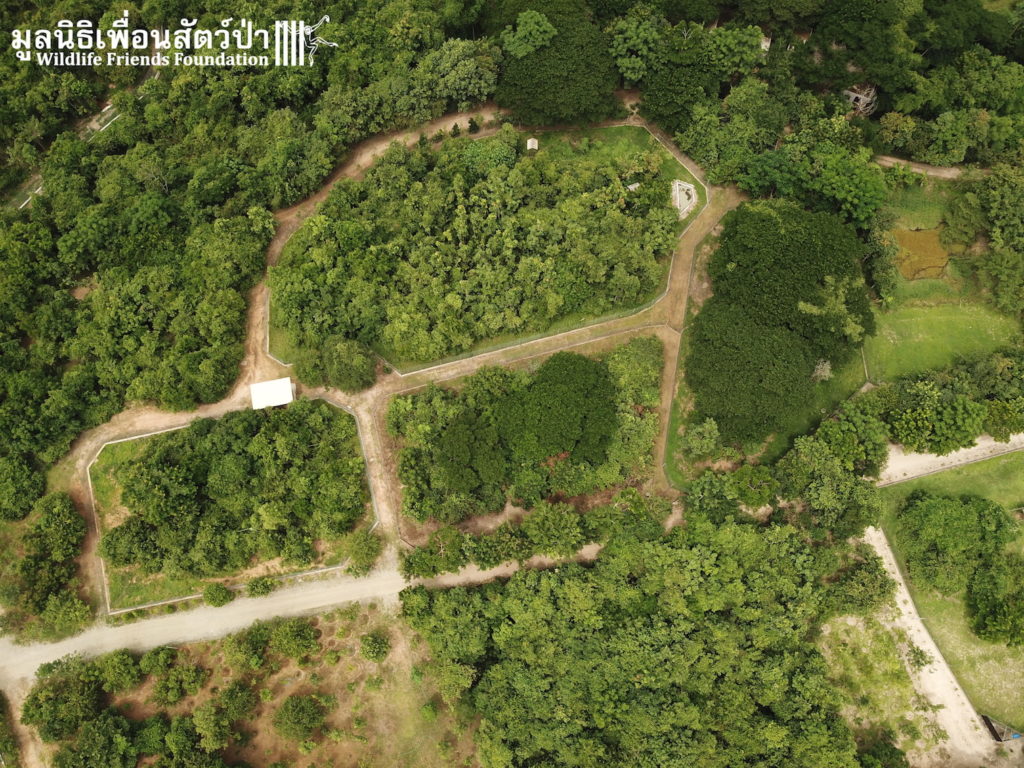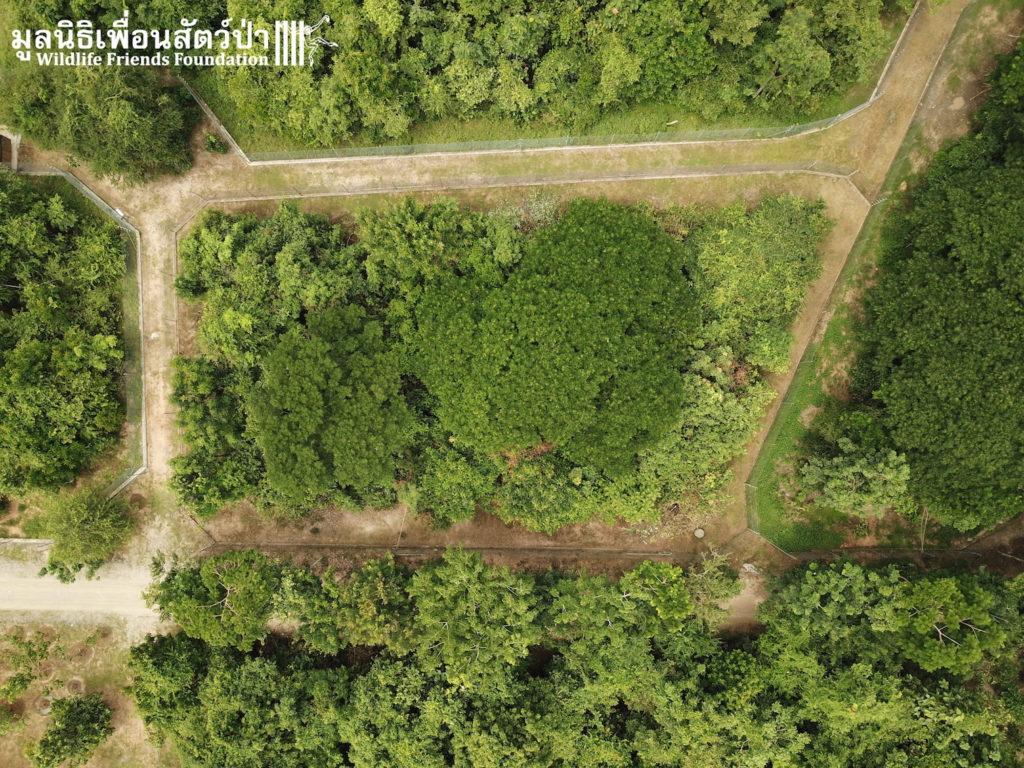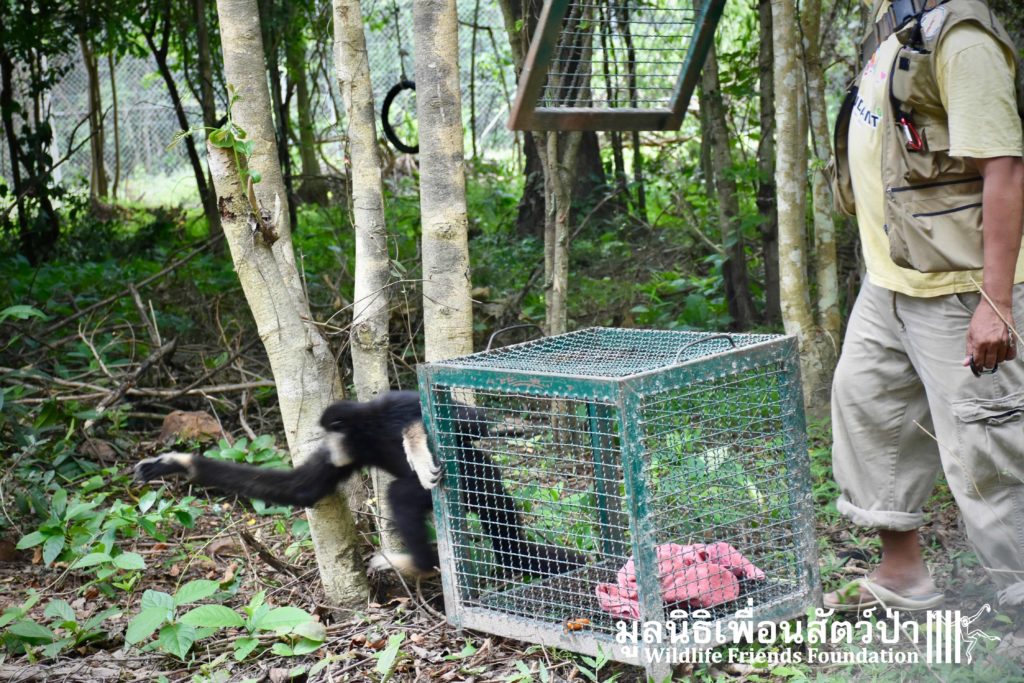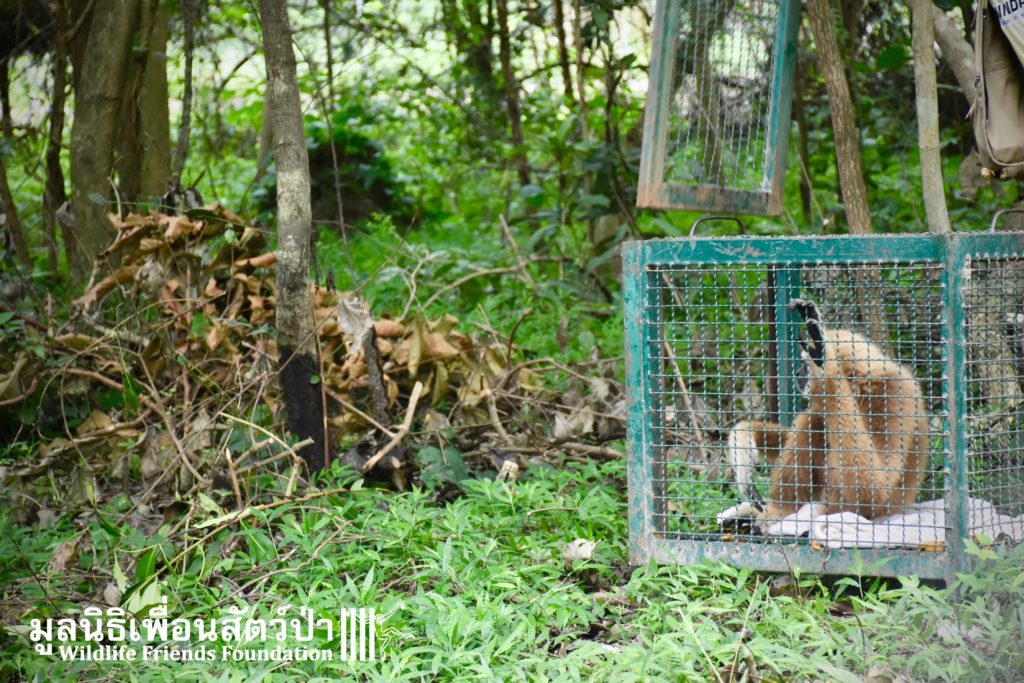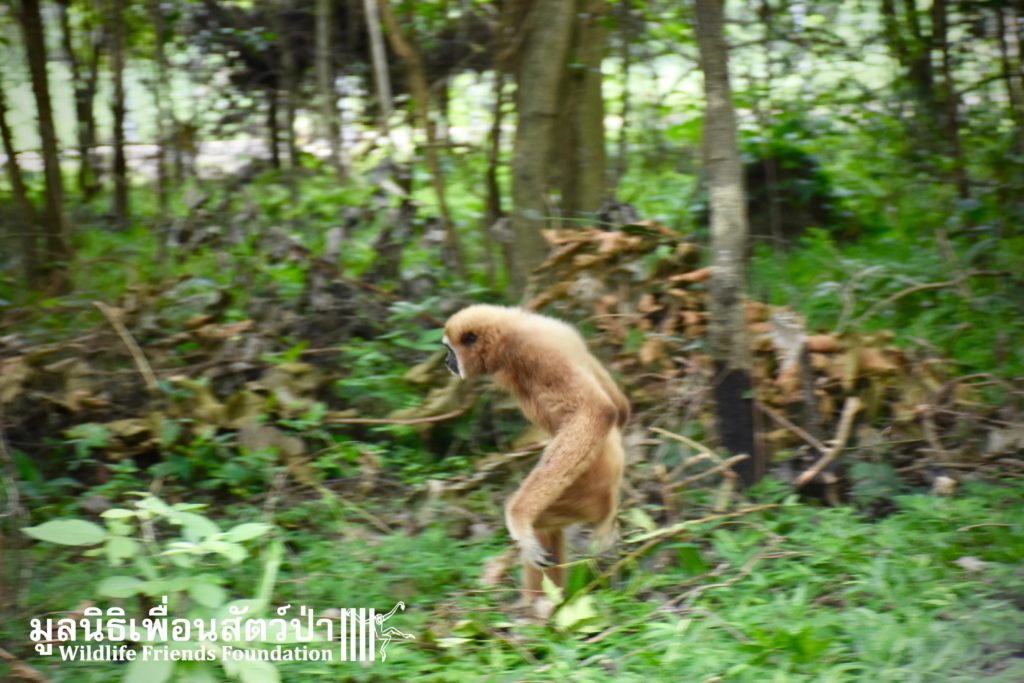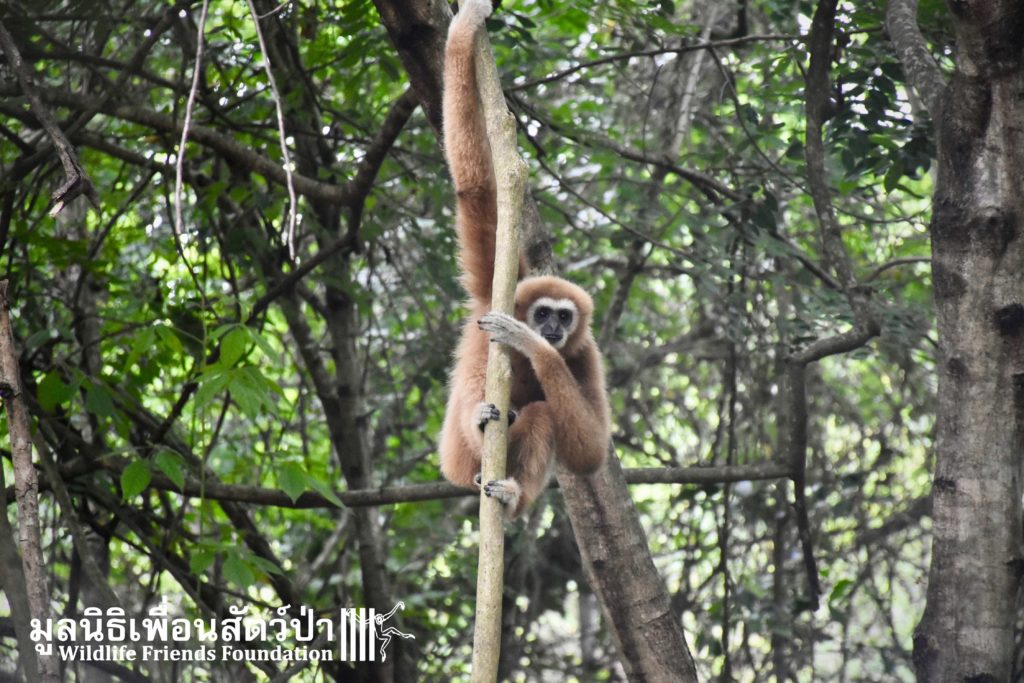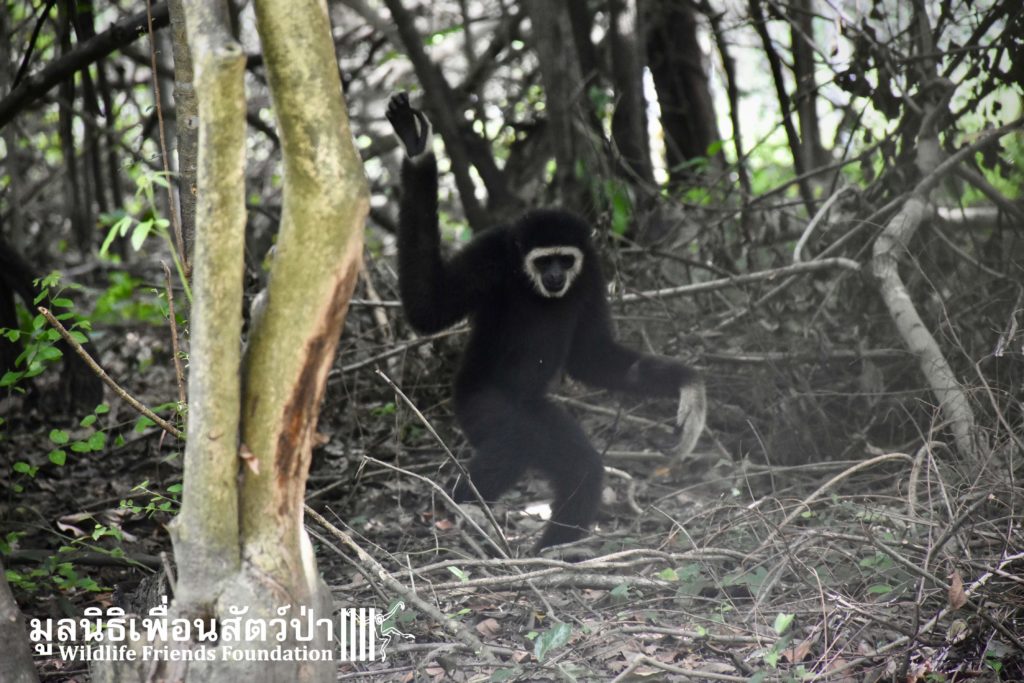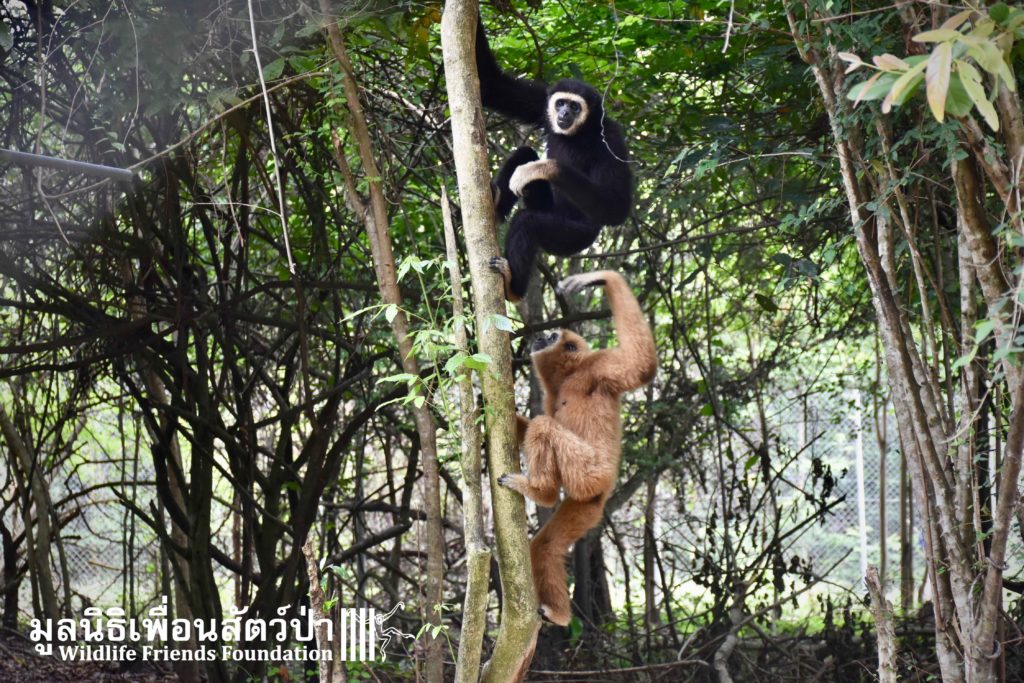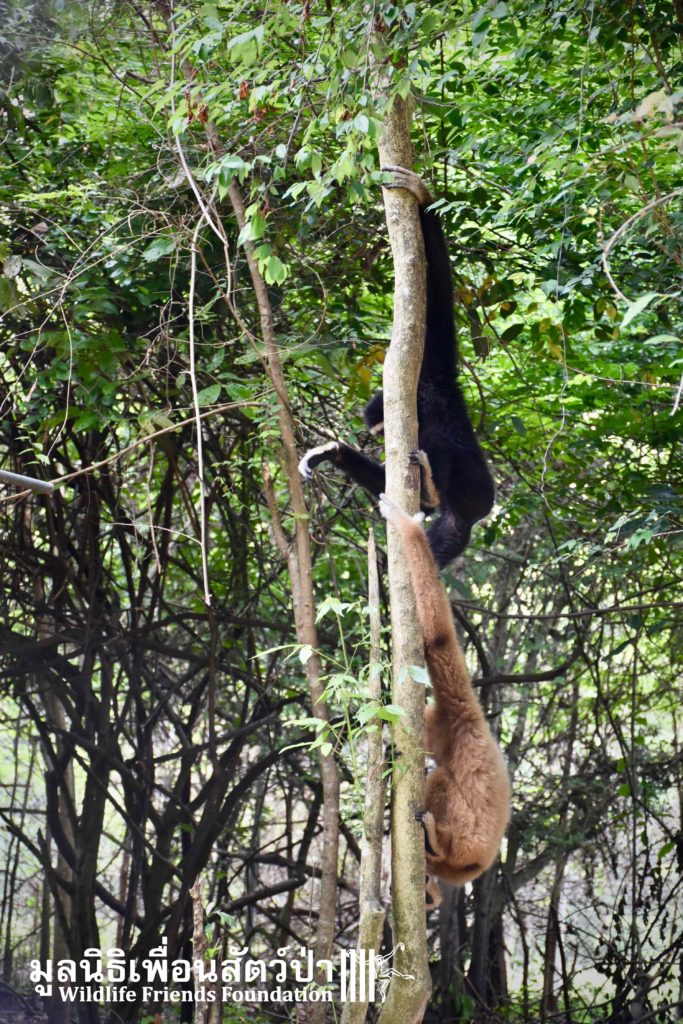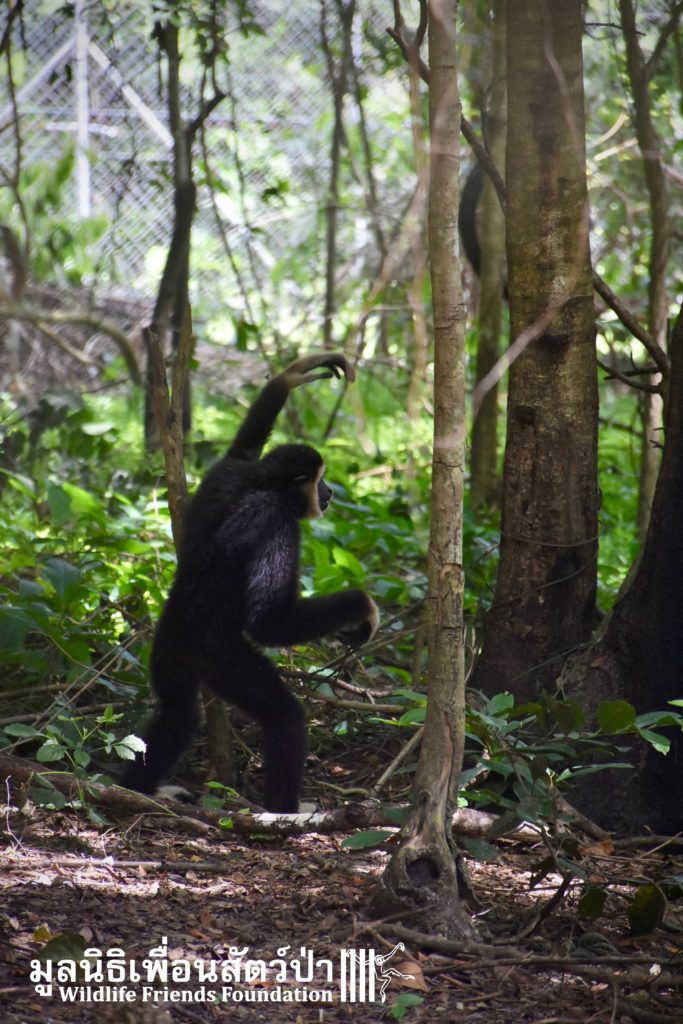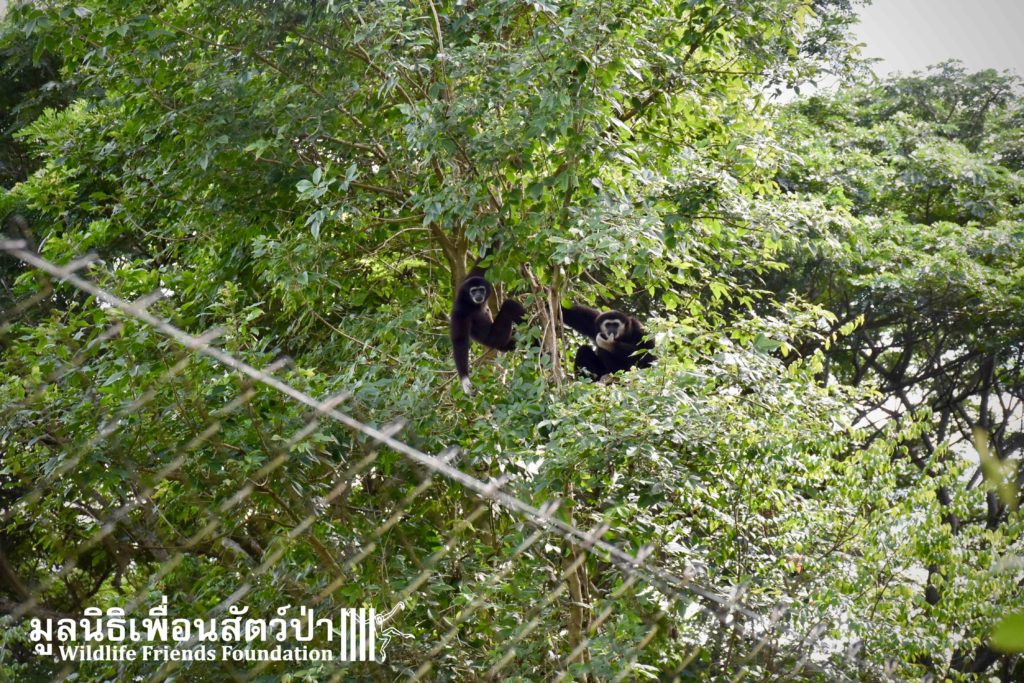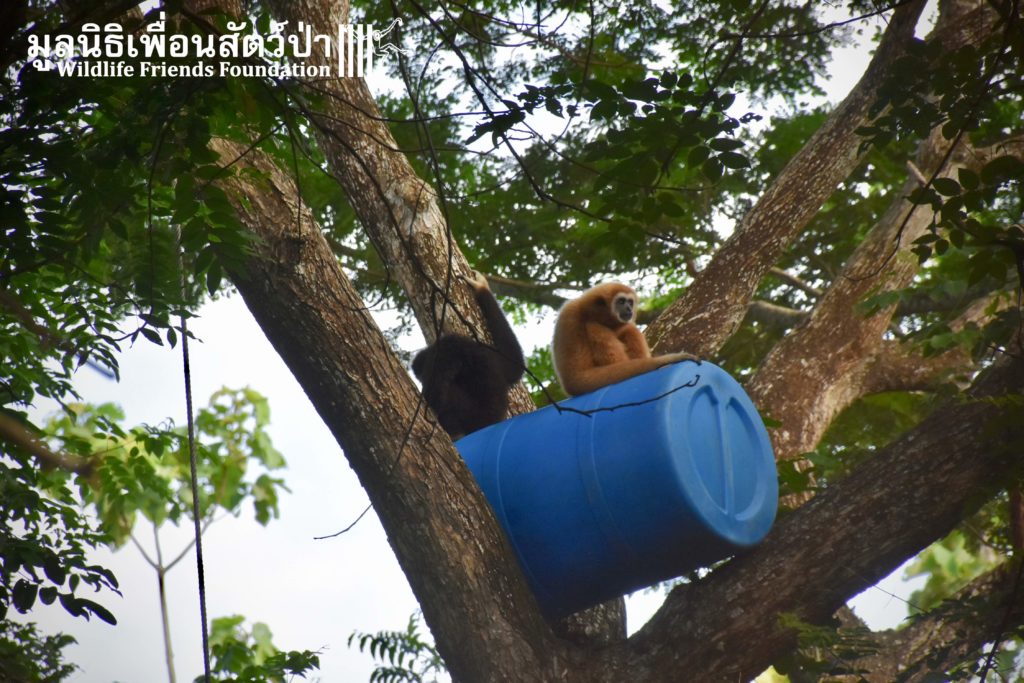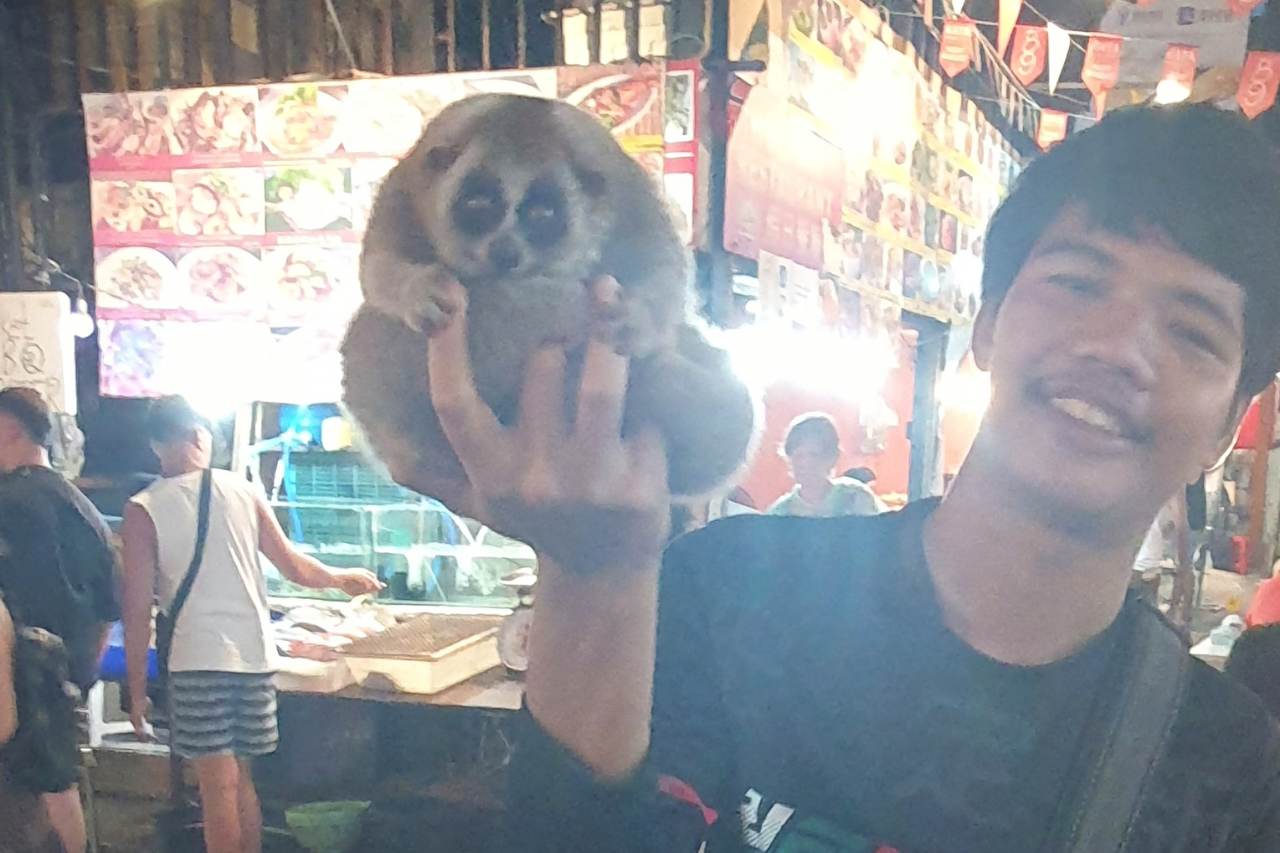It's time to take action—learn how you can help stop this exploitation and protect slow lorises from further harm.
Up into the Trees for these Lucky Gibbons
Yesterday two sub-adult white-handed gibbons (Hylobates lar), Oreo and Aung Aing, moved into a huge new forest enclosure where they can swing, sing and sleep in the forest canopy. Both of these gibbons were poached from the wild as very young infants and illegally sold into the pet trade. The female Aung Aing is 5 years old, she was rescued by WFFT in January 2016. The male Oreo is 6 years old and was rescued in June 2012. These special gibbons were hand raised here at the WFFT Wildlife Rescue Centre. Last year they were introduced with the view of them forming a social pair. We try to emulate wild gibbon societies by housing them in male/female pairs. They love exploring their new arboreal home, they especially enjoy climbing high in the tree canopy and brachiating from branch to branch.
Like most other gibbon species, they consume a largely frugivorous diet, and also eat, young shoots, leaves, flowers, and insects. Gibbons, swallow nearly all the seeds that they ingest, making them important seed dispersers in their rainforest habitat. They mature late, with females maturing at 8-10 years and males at 8-12 years, and have one offspring every 3 to 5 years. The lar gibbon is listed as Endangered (EN) on the IUCN Red List of Threatened Species, it is believed to have undergone a rapid population decline in the last three generations. This is due to rampant forest loss and loss of mature individuals due to hunting. It is sometimes hunted for its meat and the capture of young gibbons for both the pet and tourism trade is rampant, particularly here in Thailand, the mother is killed so that the infant can be taken.

